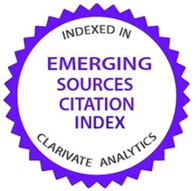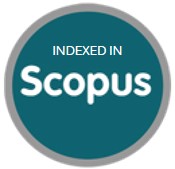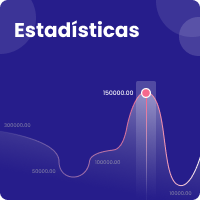La evolución del diseño inteligente: entre religión y ciencia
DOI:
https://doi.org/10.21830/19006586.321Palabras clave:
criterios de demarcación, diseño inteligente, método científico, naturalismo, pseudocienciaResumen
Este trabajo evalúa el diseño inteligente (DI) como una pseudociencia. La ciencia ha incorporado muchas definiciones; asimismo la pseudociencia. Ambas han sido discutidas en diversos ámbitos. En la esfera política, están caracterizadas por una pluralidad de conflictos de visiones en discusión. No existe una sola filosofía de la ciencia, consecuencia, tampoco una sola metodología. Los criterios de demarcación no son claros. Esto se torna problemático al evaluar el diseño inteligente. Los científicos no conciben incluir el diseño en el campo científico en su pretensión de que carece de cientificidad. Aquí, seleccionamos un conjunto de definiciones de pseudociencia para evaluar si el DI satisface los criterios de demarcación. Dado que nuestra unidad de análisis es el DI, se plantea la pregunta si el diseño inteligente es una pseudociencia, o si se puede caracterizar el diseño inteligente como una o varias formas de pseudociencia.
Descargas
Referencias bibliográficas
Aquinas, T. (2010). Summa Theologica: Translated by Fathers of the English Dominican Province: MobileReference.
Baigrie, B.S., 1988. Siegel on the Rationality of Science, Philosophy of Science, 55: 435–441.
https://doi.org/10.1086/289448
Beckwith, F. J. (2003). Science and religion twenty years after McLean v. Arkansas: Evolution, public education, and the new challenge of intelligent design. Harv. JL & Pub. Pol'y, 26, 455.
Behe, M. J. (1996). Darwin's black box: The biochemical challenge to evolution: Simon and Schuster.
Bunge, M. (1984). What is pseudoscience. The Skeptical Inquirer, 9(1), 36-47.
Davis, P. W., Kenyon, D. H., & Thaxton, C. B. (1993). Of pandas and people: The central question of biological origins: Foundation for Thought & Ethics.
Dawkins, R. (1986). The blind watchmaker: why the evidence of evolution reveals a world without design: New York: WW Norton.
Dembski, W. (1998). Science and Design. First Things, 21-27.
Dembski, W., (1999). Intelligent Design: The Bridge Between Science & Theology.
Dembski, W. (2006). In defense of intelligent design. The Oxford Handbook of Religion and Science, Oxford Handbooks in Religion and Theology: Oxford University Press, Oxford.
PMCid:PMC1635022
Dembski, W., & McDowell, S. (2008). Understanding intelligent design: Harvest House Publishers.
Discovery Institute — Center for Science and Culture. (2017). Definition of Intelligent Design.
Dunér, D. (2016). Swedenborg and the plurality of worlds: Astrotheology in the eighteenth century. Zygon®, 51(2), 450-479.
https://doi.org/10.1111/zygo.12264
Gardner, Martin (1957), Fads and Fallacies in the Name of Science (2nd, revised & expanded ed.), Mineola, New York: Dover Publications, ISBN 0-486-20394-8,
George, M. (2013). What would Thomas Aquinas say about Intelligent Design? New Blackfriars, 94(1054), 676-700.
https://doi.org/10.1111/nbfr.12035
Fuller, Steve, (1985). The demarcation of science: a problem whose demise has been greatly exaggerated, Pacific Philosophical Quarterly, 66: 329–341.
https://doi.org/10.1111/j.1468-0114.1985.tb00257.x
Hansson, S., O. (2009). Cutting the Gordian Knot of demarcation. International Studies in the Philosophy of Science, 23, pp.237-243.
https://doi.org/10.1080/02698590903196007
Hume, D. (2003). Dialogues Concerning Natural Religion.
IOSE. (2010). Significance of Origins Science ideas and issues. Retrieved from http://iose-gen.blogspot.
Koperski, J. (2008). Two bad ways to attack intelligent design and two good ones. Zygon®, 43(2), 433-449.
https://doi.org/10.1111/j.1467-9744.2008.00926.x
Mc Pherson, T. (1972). What is the argument from design? The Argument from Design, 1-13: Springer.
https://doi.org/10.1007/978-1-349-00746-2
Paley, W. (1833). Natural Theology: Or, Evidences of the Existence and Atttributes of the Deity: Collected from the Appearances of Nature: Lincoln Edmands & Company.
Peterson, G. R. (2002). The Intelligent‐Design Movement: Science or Ideology? Zygon®, 37(1), 7-23.
https://doi.org/10.1111/1467-9744.00406
Pullen, S. (2005). Intelligent Design Or Evolution? : Why the Origin of Life and the Evolution of Molecular Knowledge Imply Design: Intelligent Design Books.
Sedley, D. (2008). Oxford studies in ancient philosophy (Vol. 33): Oxford Studies in Ancient Phil.
Wallis, C. (2005). The evolution wars. Time, 166(7), 26-35.
PMid:16116981
Wexler, J. D. (1997). Of Pandas, People, and the First Amendment: The Constitutionality of Teaching Intelligent Design in the Public Schools. Stanford Law Review, 439-470.
https://doi.org/10.2307/1229302
Woodruff, P. (2006). Socrates among the Sophists. A Companion to Socrates, 36.
Descargas
Publicado
Cómo citar
Número
Sección

| Estadísticas de artículo | |
|---|---|
| Vistas de resúmenes | |
| Vistas de PDF | |
| Descargas de PDF | |
| Vistas de HTML | |
| Otras vistas | |
























